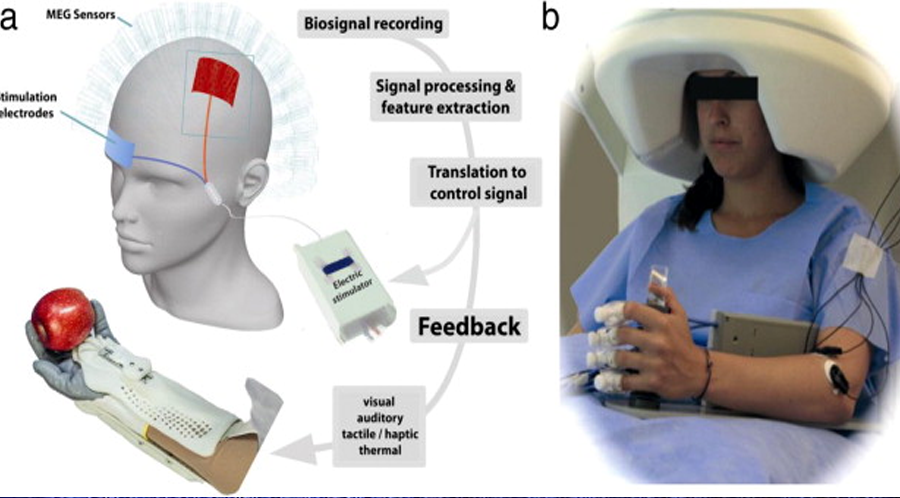Researchers from a multi-institutional team led by the lab of Woon-Hong Yeo at the Georgia Institute of Technology introduce a new wearable brain-machine interface (BMI) system that combines wireless soft scalp electronics and virtual reality. It allows the user to think action and wirelessly controls a wheelchair or robotic arm. The system is of great advantage for people with motor dysfunction or paralysis.
“The major advantage of this system to the user, compared to what currently exists, is that it is soft and comfortable to wear, and doesn’t have any wires,” said Yeo, associate professor at the George W. Woodruff School of Mechanical Engineering.
BMI systems analyze the signals from the brain and translate them into commands, turning intentions into actions. Common BMI systems use gels or pastes to maintain skin contact and are inconvenient to use. The new portable system integrating imperceptible microneedle electrodes with soft wireless circuits offers improved signal acquisition.
“This is just a first demonstration, but we’re thrilled with what we have seen,” noted Yeo, Director of Georgia Tech’s Center for Human-Centric Interfaces and Engineering.





